The History of The Blues
By Vicki Lynn
The Blues originated in the Deep South of the USA by African-American peoples brought to the country to do the work of privileged
white folks, and even though most did not own slaves, the poor still felt superior for they may have been poor, they weren't
slaves or black, they were privileged simply by being white. The slave, on-the-other-hand was destitute, poor, and rundown. And
their music reflected the racial discriminations they endured, reflected their strong spiritual faith, and their belief that they
would be free someday from the harsh conditions under which they worked and were enslaved.
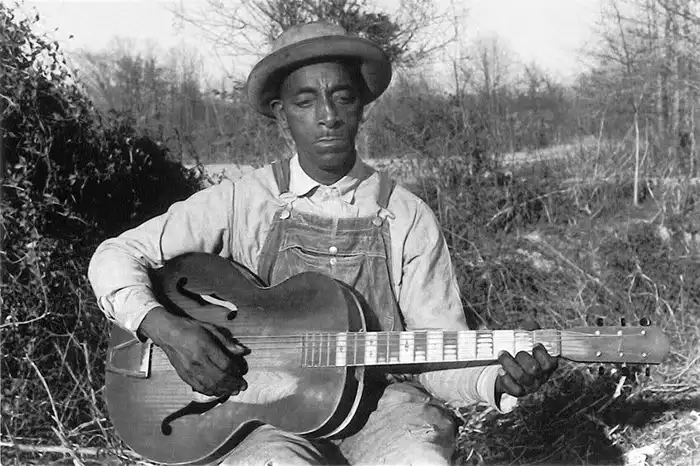
Mississippi Fred McDowell in 1960
The Blues can be found in jazz music, rhythm and blues music, and rock and roll music; and is often characterized by a
call-and-response pattern heard on the plantations and in the fields of the Deep South in the 19th century. A common pattern
can be illustrated by the song; "I'm Tore Down" written by Sonny Thompson in 1961, if it would have been sung 100 years earlier,
you may have heard it in the fields. "I'm tore down; I'm almost level with the ground. I'm tore down; I'm almost level with the
ground. Well, I feel like this when my baby can't be found". Out in the field a singer or a group would sing, "I'm tore down; I'm
almost level with the ground." And further down the field another singer or group would respond with, "Yea, I'm tore down; I'm
almost level with the ground". And both singers or groups would sing, "Well, I feel like this when my baby can't be found"; thus
the call-and-response pattern.
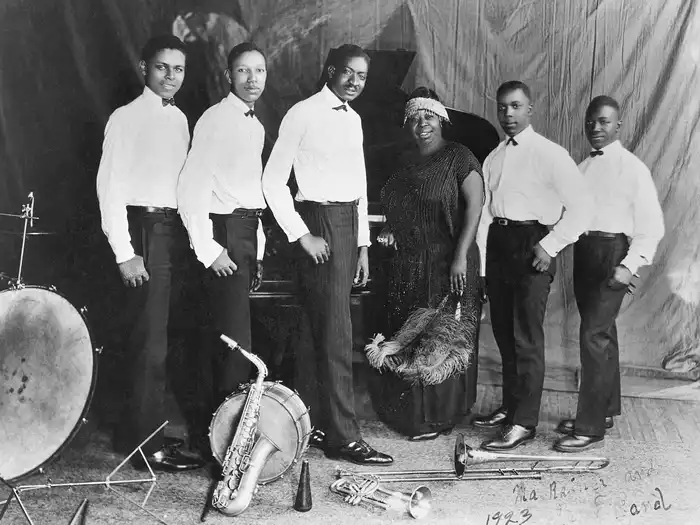
Ma Rainey, Mother of the Blues in 1923
The twelve-bar blues is a common blues progression incorporating the call-and-response pattern, the blues scale and blues chord
progressions. The blue notes, "worried notes", are usually thirds, fifths or sevenths flattened in pitch. Early blues started out
consisting of a single line repeated four times and by the 20th century the structure was altered to what we know today as the
AAB pattern consisting of a line sung for the first four bars, repeated over the next four bars and then a longer concluding line
over the last bar. This pattern of call-and-response and the use of blue notes can be traced back to Africa, and was associated
with the religious music from Africa.
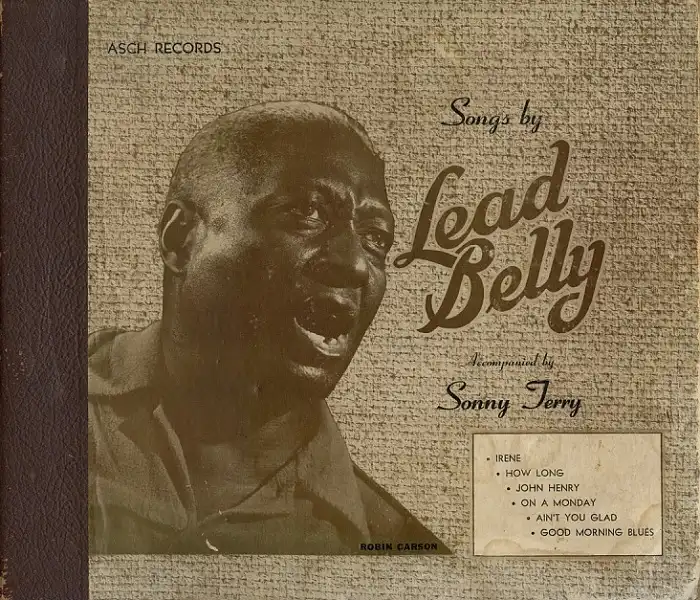
Album of Songs by Lead Belly
In 1908 the first sheet music publication of blues music was printed, and the first copyrighted blues song was Hart Wand's
"Dallas Blues" in 1912. Since then the music has evolved from the basic vocal music of African slaves to country blues like Delta
blues, Piedmont blues, and urban styles like Chicago blues and West Coast blues. And by the mid 1940s the blues transitioned from
acoustic to electric blues, which was the turning point when blues began to move to a wider white audience; and by the 60s and
70s blues rock was formed combining blues with rock music.
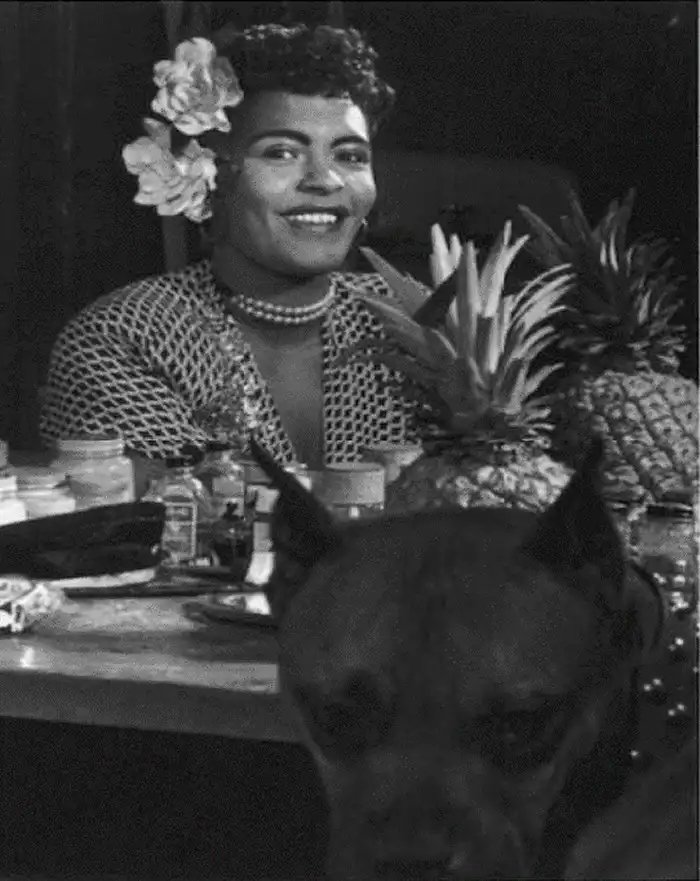
Billie Holiday, Downbeat New York, N.Y. in 1946
In the early blues African-American singers sang narratives of the harsh reality of lost love, personal troubles, hard times, and
the cruelty of the police agencies whose primary role was to eradicate the black population. Billie Holiday starts out in the
song "Strange Fruit" in 1939 with the lyrics, "Southern trees bear strange fruit, blood on the leaves and blood at the root,
black bodies swinging in the southern breeze, strange fruit hanging from the poplar trees".
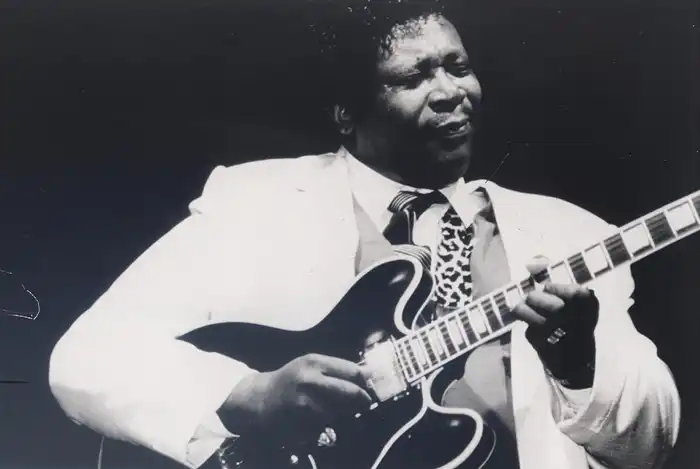
B.B. KING, King of the Blues
Although the blues is often associated with pain and misery the lyrics can often be witty and dirty as heard in the hokum, or
dirty blues song, "Banana in Your Fruit Basket" by Bo Carter. "I got a brand new skillet, I got a brand new lead, all I need is
a little woman, just to burn my bread. I'm tellin' you baby, I sure ain't gonna deny, let me put my banana in your fruit basket,
then I'll be satisfied; now, I got the washboard, my baby got the tub, we gonna put 'em together, gonna rub, rub, rub".

Little Richard in 2007
Popular blues musicians during the 1920s and 1930s helped spread the popularity of the 12-bar blues progressions, although other
forms like the 8-bar blues was performed in such hits as "How Long Blues", and "Key to the Highway", and 16-bar blues as in Ray
Charles' "Sweet 16 Bars", and Walter Vinson's 9-bar blues song "Sitting on Top of the World".
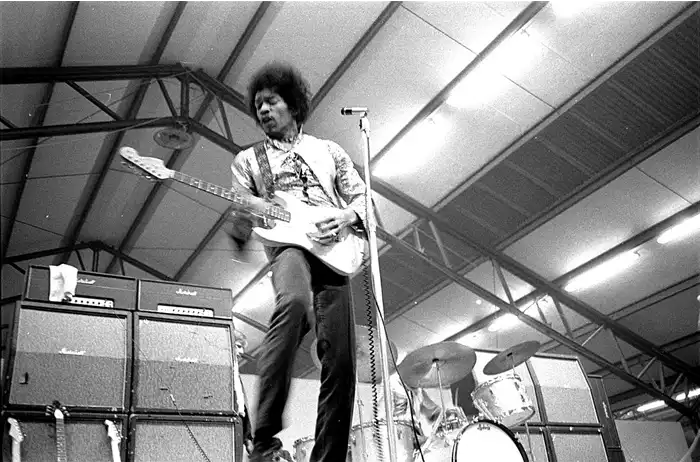
Jimi Hendrix, Hague, Netherlands in 1967
Rock and roll, which was heavily influenced by the blues grew in popularity during the 1960s with white performers like the
Beatles and the Rolling Stones, brought the blues originators to the forefront like Willie Dixon, Muddy Waters, and country
blues musician, Big Bill Broonzy.
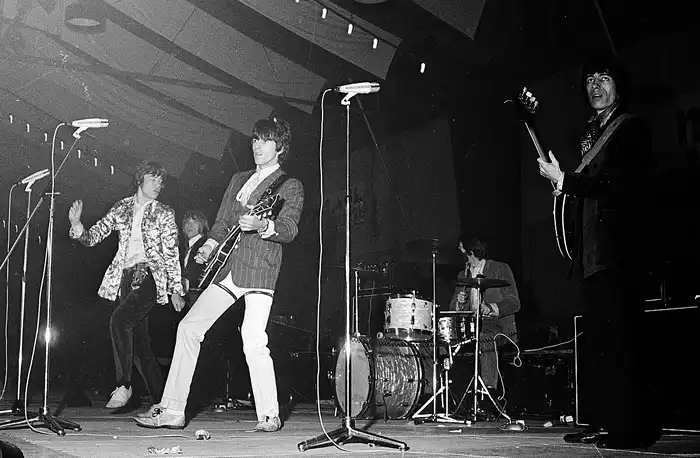
The Rolling Stones in 1967
Traditional blues artist like Muddy Waters, B. B. King, known as king of the blues, Bobby "Blue" Bland, and John Lee Hooker
began performing to wider white audiences, and performing alongside Eric Clapton and Booker T & the MGs.
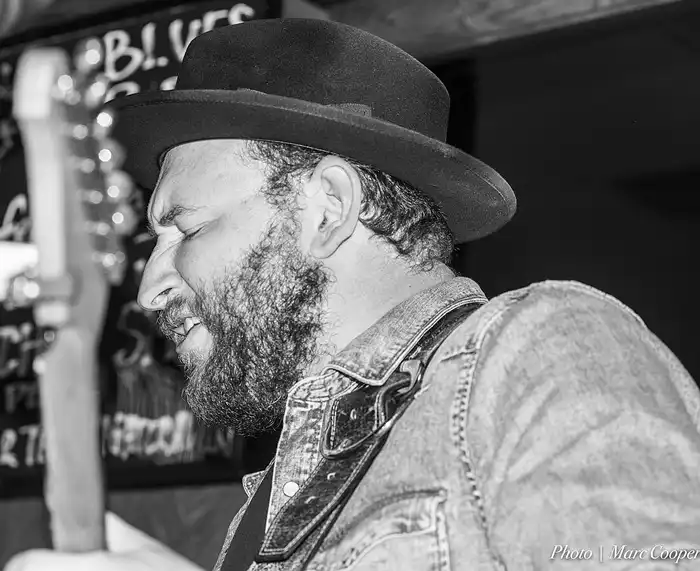
Blues Master Josh Smith
British Blues gained popularity in the U. K. with musicians like Fleetwood Mac, Cyril Davies, the Rolling Stones, John Mayall &
the Bluesbreakers, the Yardbirds, the Animals, Cream, Rory Gallagher, and early Jethro Tull. And in turn the British Blues artist
brought the blues back to America in the likes of Janis Joplin, Johnny Winter, Ry Cooder, Canned Heat, and the Allman Brothers
Band. And Jimi Hendrix who was in a class by himself, and considered by many to be the greatest guitar played to have lived.
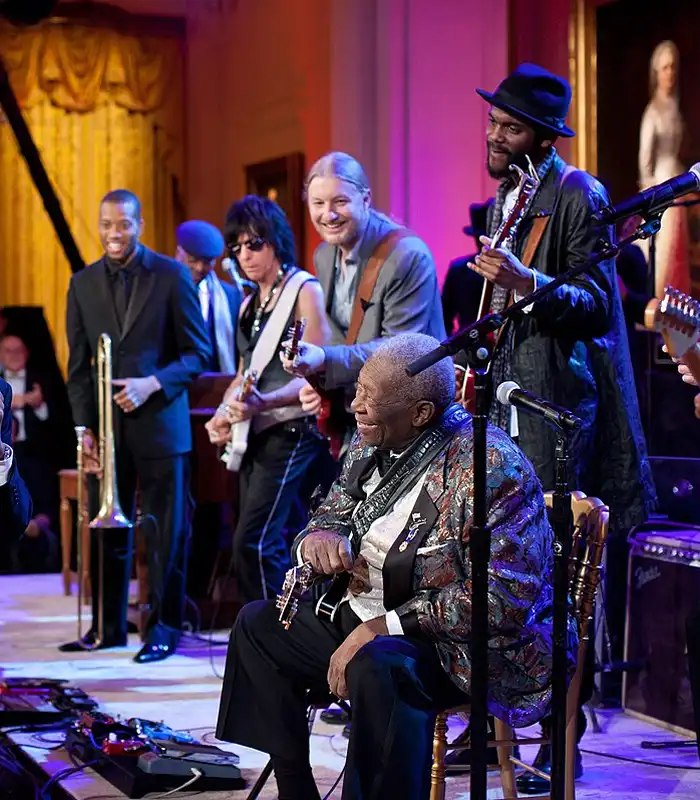
A Performance at the White House: Red, White and Blues concert in 2012. Participants from left: Troy "Trombone Shorty" Andrews,
Jeff Beck, Derek Trucks, B.B. King, and Gary Clark, Jr.
The 1970s Texan Blues, which was heavily influenced by British rock-blues, gained popularity with Stevie Ray Vaughan, the
Fabulous Thunderbirds, Johnny Winter, and ZZ Top. During the 1980s musicians like Tracy Chapman with her hit "Give Me One
Reason", and Eric Clapton with his "Unplugged" album made a huge impact in the field of blues music.

House of Blues Myrtle Beach, South Carolina
Blues music is primarily about raw emotions and consequentially not about perfection and sanitation, as seen in the wild child
of the blues, rock and roll.
Add Comment
Insert Bullet List
Please enter at least one item.
Item:
Item:
Item:
Item:
Item:
Insert Numeric List
Please enter at least one item.
Item:
Item:
Item:
Item:
Item:
Insert Link
Please enter the link of the website
Optionally you can add display text
Insert Email
Please enter the email address
Optionally add any display text
Insert Image
Please enter the link of the image
Insert YouTube Video
Please enter the link of the video
Image Upload
Privacy Policy
This policy contains information about your privacy. By posting, you are declaring that you understand this policy:
- Your name, rating, website address, town, country, state and comment will be publicly displayed if entered.
- Aside from the data entered into these form fields, other stored data about your comment will include:
- Your IP address (not displayed)
- The time/date of your submission (displayed)
- Your email address will not be shared. It is collected for only two reasons:
- Administrative purposes, should a need to contact you arise.
- To inform you of new comments, should you subscribe to receive notifications.
- A cookie may be set on your computer. This is used to remember your inputs. It will expire by itself.
This policy is subject to change at any time and without notice.
Terms and Conditions
These terms and conditions contain rules about posting comments. By submitting a comment, you are declaring that you agree with these rules:
- Although the administrator will attempt to moderate comments, it is impossible for every comment to have been moderated at any given time.
- You acknowledge that all comments express the views and opinions of the original author and not those of the administrator.
- You agree not to post any material which is knowingly false, obscene, hateful, threatening, harassing or invasive of a person's privacy.
- The administrator has the right to edit, move or remove any comment for any reason and without notice.
Failure to comply with these rules may result in being banned from submitting further comments.
These terms and conditions are subject to change at any time and without notice.
{"commentics_url":"\/\/skoukor.com\/cmt\/","page_id":397,"enabled_country":true,"country_id":0,"enabled_state":true,"state_id":0,"enabled_upload":true,"maximum_upload_amount":3,"maximum_upload_size":5,"maximum_upload_total":5,"captcha":false,"captcha_url":"","cmtx_wait_for_comment":"cmtx_wait_for_comment","lang_error_file_num":"A maximum of %d files are allowed to be uploaded","lang_error_file_size":"Please upload files no bigger than %.1f MB in size","lang_error_file_total":"The total size of all files must be less than %.1f MB","lang_error_file_type":"Only image file types are allowed to be uploaded","lang_text_loading":"Loading ..","lang_placeholder_country":"Country","lang_placeholder_state":"State","lang_text_country_first":"Please select a country first","lang_button_submit":"Add Comment","lang_button_preview":"Preview","lang_button_remove":"Remove","lang_button_processing":"Please Wait.."}
{"commentics_url":"\/\/skoukor.com\/cmt\/","language":"english"}
|
Copyright © Skoukor Music 2025
|
||

|
||


Comments